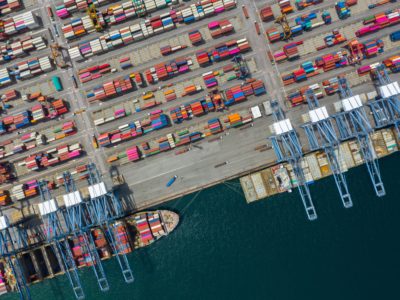
The Intermodal Association of North America (IANA) and the Bureau International des Containers (BIC) have collaborated to standardize the identification of terminals, ramps, container yards and depots in the United States.
Each facility in IANA’s Intermodal Facilities Directory, maintained as part of its administration of the Driver Vehicle Inspection Reporting service, now has a structured address, GPS coordinates, a 9-character BIC Facility Code along with the preexisting IANA location code that serves the North American markets today. Adoption of these codes is expected to result in smoother communication between parties, quicker identification of facilities by third parties such as motor carriers and telematics providers, more efficient lessor-lessee communications related to on/off-hires and better visibility for BCOs.
IANA offers API subscriptions to utilize not only the existing 1,300 IANA Location Codes today, but also the related BIC Facility Codes and SMDG Ocean Terminal Codes for future adoption of the standardized codes. The BIC Facility Code was originally developed as the Locode under international standard ISO 9897, assigned to the BIC in 1997, and is now a listed “child code” of the UN/Locode.
The BIC Facility Code database provides a harmonized facility code, street address and GPS coordinates for over 16,000 container facilities in 188 countries. Assisted by the Digital Container Shipping Association (DCSA) and major container lessors, the BIC completed a major harmonization of container facility codes in November 2020, then launched the joint BIC-SMDG API to provide a single point of access for both the BIC Facility Codes and SMDG ocean terminal codes globally.
“In order to achieve the global vision of uniform data, it’s important to have the support of the local regions with the backing of individual organizations that operate within the regions. We believe that the collaboration between BIC and IANA is a step in the right direction to achieve the compatibility of location codes in the North American market,” said Jon Palmbak, senior vice president, Digital Products & Technology at IANA.
“Following the global facility harmonization project conducted with the support of the DCSA, and the launch of the API, we’re very excited to be working with IANA in North America. IANA brings terrific coverage and expertise in the region, enriching the BIC Facility Code database with the IANA network and bringing us closer to our shared goal of the global adoption of data standards in our industry, “said Douglas Owen, Secretary General of the BIC.
About IANA
IANA’s roster of more than 1,000 corporate members includes railroads, ocean carriers, ports, intermodal truckers and over-the-road highway carriers, intermodal marketing and logistic companies, and suppliers to the industry. This roster gives IANA a unique position within the intermodal community, one which is authoritative, holistic and able to affect change that benefits everyone. IANA consistently supports the shared needs, interests, and goals of its diverse members – regardless of mode or function – with business solutions, education, and networking opportunities. For more information, visit www.intermodal.org.
About BIC
Founded under the auspices of the International Chamber of Commerce in 1933 as a neutral, non-profit, international organization, the BIC today has over 2400 members in over 120 countries. The BIC has played an important role in the growth of containerization, with its long-established and active role in the development and maintenance of industry standards. Publisher of the BIC Code Register since 1970, the BIC has been the industry’s global container prefix registry for over 50 years. Since 2013 the BIC has also operated the Global ACEP Database under the guidance of the IMO. In 2016, the BIC launched the BoxTech Global Container Database (bic-boxtech.org) to help improve efficiency and safety in the supply chain, and to help simplify compliance with SOLAS container weight reporting requirements.
The BIC holds official observer status as an NGO at the International Maritime Organization (IMO), the World Customs Organization (WCO), and the United Nations Centre for Trade Facilitation and Electronic Business (UN/CEFACT) and works closely with the ISO and other standards organizations. Learn more at www.bic-code.org




More Stories
Click Shield from MIKROE simplifies integration of Arduino Portenta with over 1600 Click boards
Optimizing Mid-Power Silicon MOSFETs for Automotive Applications
Paolo Pininfarina named the 2024 Laureate of The American Prize for Design